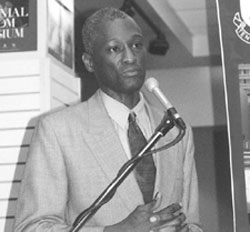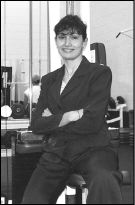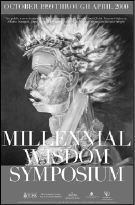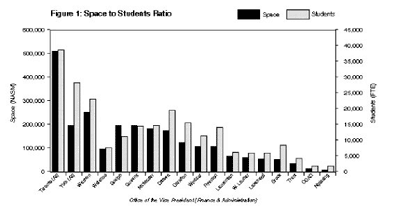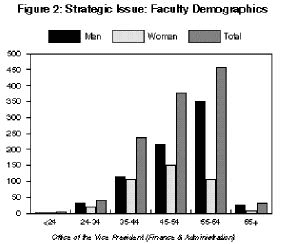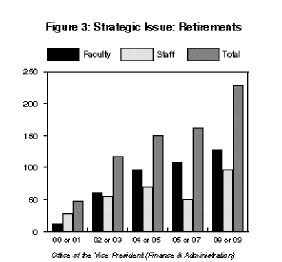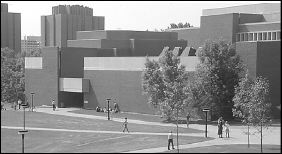
|

|
| | |
| | VOLUME 30, NUMBER 16 | WEDNESDAY, JANUARY 19, 2000 | ISSN 1199-5246 | | |
| | ||||
|
|
By Susan Scott Royson James, municipal-affairs columnist at The Toronto Star speaking at York as part of the York-Star Speaker Series. Newspapers and universities are "agents of change" that can help stir debate and shape opinions, but each needs a vision of how to connect with people. Royson James, municipal-affairs columnist at The Toronto Star, shared his views with a group of students, staff and faculty who gathered in the University's Bookstore in November. The talk was another in a series featuring Star writers jointly sponsored by York and the Star. He said a city like Toronto is complex and full of issues. "Competing voices" are essential to provoke debate on issues of the day. James said newspapers "travel the journey to find a balanced vision every day" and universities like York can be the "independent agents" providing another perspective. James cited the example of "squeegee kids" in downtown Toronto, and wondered whether the city's plan to move them off the streets is the correct choice. While newspapers can explain the story to readers, he asked what the impact of "squeegee kids" on the downtown area is? James suggested this is where universities can provide the "flesh" to the bone by going beyond the issue. In another example, James said the bid by Toronto to host the 2008 Summer Olympics is "awesome" and would put Toronto on the international map. On the other hand, there are those at the Star (and elsewhere) who feel the bid is too risky and would put the city in debt. "That's balance," said James. "You've got one newspaper, and competing voices." York could add its voice by undertaking a study of the economic impact of hosting the Olympic Games in Toronto. "Where is the intellectual muscle to the emotional sinew?" he asked. James also suggested York must carve out its own vision to make its voice heard, particularly by Toronto City Council. For example, on York's continuing campaign to have public transit - either a subway line or GO Transit - extended to campus, James said it's up to the University to strengthen its alliances with partners in York Region.
| |||
|
|
Not just a new year's resolution
By Kyle Byron Rosie Carusi, York's Fitness and Lifestyle Programs Coordinatore You don't have to meet Tony Robins to get a dose of motivation, just head over to the Tait McKenzie Centre and ask for Rosie. Since she was a work/study student in the 1980s, Rosie Carusi has been converting unbelievers and procrastinators into fitness freaks. Her title is Fitness and Lifestyle Programs Coordinator and her mission is to change your life. Recently, she has inspired the lives of three York University community members. When Rick, a York student, stepped into Rosie's office he had never worked out in his life. He was overweight and needed to take control of his fluctuating diabetes. His pessimistic attitude about exercise was partly due to fear and intimidation. "All I asked of him," says Carusi, "was to give me and our program a chance. Now he has lost weight, has control of his diabetes and continues to improve." Carusi handles only a small portion of the clientelle, the rest are taken by her staff of qualified trainers. One such trainer is York student Giovanna Martone. Her most interesting client is a PhD student at York. Sara was another example of pessimism and fear of the gym culture until Rosie and Giovanna changed her life, "They make me feel like I can conquer the world," says Sara. Golden-aged client Barb has done some conquering of her own. Barb is a Staff member at York with osteoporosis. Studies have shown that pumping iron is as important as drinking milk in healthy bone maintenance. Trained by program assistant and personal trainer Many Bruce, Barb takes her workouts seriously with the intensity of a boxer. Her rigorous approach has paid off as her bone density has increased over the last year. When in Carusi's presence, one instantly becomes motivated to improve. Her mission statement is, "to improve the staff's, students' and faculty's quality of life beyond the educational sphere, using the latest technology and research. Education is all about expanding the intellectual and emotional being in a person. I want to enhance the physiological aspect of your being and make you a complete person." Is this program for you? Tentanda via - try a healthy lifestyle. "I don't necessarily want the jock who knows it all," says Carusi, "I want to introduce our program, our healthy lifestyle, to people who don't believe they can do it."
| |||
|
|
Millennial Wisdom: Excavating the feminine past - do women make a better world?
By Beverley Else Do women make a better world? "Of course!" quipped Susan Swan at the opening of the 3rd lecture evening of the Robarts Millennial Wisdom Symposium on November 24 at the Royal Ontario Museum. Swan, a celebrated novelist, professor of humanities at York University and the Robarts Millennial Chair in Canadian Studies, created the series to look at the way we re-create the past in popular culture through literature, archeology and history. Speaking to an audience predominantly of women, and including many well-known Toronto feminist writers and activists, Swan introduced the subject and the evening's guests: British historian and novelist Rosalind Miles, feminist thealogian Carol Christ, Trent University archeologist Susan Jamieson and archeological mystery author Lyn Hamilton. Miles, author of a number of books including the recent novel Guinevere, and her highly acclaimed The Women's History of the World, reminded the audience that most of what we know of history was written from the male point of view. "We need to strip off the layers and look at the reality," she said, revealing the little known facts that Joan of Arc was burned at the stake for wearing men's clothes and that Florence Nightingale was originally known as the "Lady with the Hammer". Warming to her subject, Miles spoke about the Victorian novel and its "usurpation" by men. "And even today men still greatly outnumber female novelists," she said. However, in the past few years Miles believes that women writers have found a legitimate way to help excavate the feminine past through historical fiction, rewriting our understanding of the everyday lives of women in history. Using Guinevere as an example, Miles rejected the traditional concept of the Arthurian queen as a pawn in the story - "a woman wringing her hands and waiting for the men to settle the problems." Instead she suggests we look at the known history of other Celtic queens such as Boudicca (Boadicea) and Cartemandua who were both leaders and warriors and who selected the finest available warriors for their mates. "The land was hers [Guinevere]; the 70,000 men were hers," Miles insists. "In her goddess centred world Arthur could only become high king through her. She was the apex of the triangle, and in this context, the rivalry between Arthur and Lancelot becomes very clear and understandable." Jamieson spoke of uncovering the Lakefield homestead of Canadian pioneer and writer Susannah Moodie. In Moodie's book Roughing It in the Bush, she eloquently described the lifestyle and hardships suffered by the early 19th century pioneers. Later male critics have said that she exaggerated these hardships, but Jamieson's excavations seem to prove Moodie correct. "Archeology is not a thing, but a process and is engaged in as understanding develops and changes," Jamieson said. She believes that there is tension between power and knowledge and that one cannot find truth based on one type of archeological study or in the words of one archeologist. The feminine viewpoint must also be heard. Jamieson encourages diversity in archeology as only improving our knowledge and understanding of the past. Thealogian Carol Christ, a leading voice in feminist religious studies, a founder of the women's spirituality movement and author of such works as Diving Deep and Surfacing, The Laughter of Aphrodite, Womanspirit Rising and most recently Rebirth of the Goddess, brought a message of warning for the new millennium, saying that there may not be another full millennium if we continue the way we are going [in destroying the environment]. "Our greatest problems are in our attitudes towards women, our bodies and nature," she said and suggested that we need to stop looking at everything in terms of its benefit to ourselves. At her Ariadne Institute she tries to instill these feelings in those that join her on annual tours in Greece. Christ spoke of the Minoan "palaces" of Crete as "agricultural and spiritual centres" and seeks a way to bring us back to the goddess centred belief in an acceptance of life. She also decried the academic backlash of attempts to discredit the goddess movement saying that this is the result of many years of living in a dominator society. Christ has written of nine ethical touchstones that she believes individuals, communities and societies should learn to live by: * nurture life * walk in love and beauty * trust the knowledge that comes through the body * speak the truth about conflict, pain and suffering * take only what you need * think about the consequences of your actions for seven generations * approach the taking of life with great restraint * practice great generosity * repair the web Both Miles and Christ made predictions for the new millennium. Miles believes women will dominate in terms of numbers and the freedom that they will have both in their ability to love and to manage change, but warned that we must not forget what has happened to women in the past. "We must remember what we excavate or we are bound to repeat it." Christ reflected that women of each generation believe they are facing new challenges, not realizing that others have faced the same challenges before them, and echoing Miles' closing statement that we must not forget.
| |||
|
|
Growing pains: York plans for anticipated surge of students By Susan Scott There are some big changes coming to Ontario universities, particularly those in the Greater Toronto area like York. What's driving this change is population growth and the impact this will have on most aspects of university life.
Part of this wave of new students, starting in 2003, will be caused by the double cohort. That year both Grade 12 and Ontario Academic Credit (OAC) students will graduate from high school because of reforms to the secondary school system. But, there's another side to the story. It's based on population growth and more young people - specifically those in the 18-24-year-old category - potentially entering the university system starting over the next few years. York's planning has been ongoing for more than a year and the University is prepared to handle the additional wave of new learners, provided provincial government and private sector resources are in place, says York President Lorna Marsden. She estimates that the University will gain, by the year 2010, upwards of 10,000 new students. One of the main reasons for this is York's proximity to York Region, the fastest growing area in Canada, and the region with the fastest growth in that 18-24-year-old age group - precisely the group most likely to attend university.
At the same time, Marsden emphasizes that detailed planning can't begin until the provincial government announces its decision on proposed capital (building) projects, operating funding and student assistance. "At this point, we are preparing as much as we can," says Marsden. "We have been part of a provincial study on this issue and have been making presentations within the University's administrative forums, to the board, the University Senate and anywhere else we can identify. The real issue is not the double cohort, but the demographic growth, the "echo boom" [the children of the baby boom generation] that's putting another 90,000 additional students into the Ontario university system between now and 2010. First, we have been working with the deans and the Faculty leaders to look at, where possible, growth at York should take place. Second, we have, of course, put in applications for the province's Super Build program [the provincial government program that provides funding for new buildings and other capital projects]. Third, we are working very hard to increase funding to get more faculty." She continues, "When I'm out at a gathering, the single most common question I'm asked is 'will there be enough room for my son or daughter at your university?' As yet the answer to that is unclear because of the funding question. We can't get more students if we don't have faculty and can't get faculty if we don't get more operating money. Now if York gets the same proportion of the growth - right now York has 12 per cent of the students in Ontario - we would take an additional 8-10,000 students. But here we sit in on the edge of York Region which is the fastest growing region in the country in the 18-24-year-old age group. Can we just take 8 or 10,000? Or will we be under terrific pressure to take more? It's too soon to tell, but I think it's important that students, faculty and staff have a really good grasp of our demographic situation so we can prepare if we need to do so." Other factors in the mix include impending faculty retirements, space limitations on campus, and related parking and security issues (see graphs).
"You see our planning going on in land use planning, parking, student services and residences. People can find out more about this by looking at our presentations at Senate. It's a whole project, a layered process and we expect that by the spring or early summer we'll be in a better position to provide an update to the York community. What are NASMs and why do we need more of them? Net assignable square metres - NASMs - refers to the amount of space available for teaching and learning including libraries and lecture halls. Currently, York has just under 200,000 square metres. However, the University has almost double that number of students. Across the Ontario system, the average ratio of space per student, according to figures from York's Finance and Administration office, is approximately 10.3 assignable square metres. At York, the figure is just under seven square metres. Council of Ontario Universities (COU) weighs in Earlier this year, the COU approved proceeding with two studies expected to be released in early 2000. The first looks at quality indicators and quality enhancement in universities and compares and contrasts other jurisdictions including other Canadian provinces, the United States, the United Kingdom and Australia. The second investigates the prospective labour market for university faculty and its implications for Ontario. Once again, the study will identify approaches used in other regions and compare these with the situation in Ontario. Survey says...Ontarians speak out on university education A survey released earlier this year by the Angus Reid polling group illustrated how Ontarians view postsecondary education. Here are some of the findings: * 88 per cent of Ontarians agree that any qualified student should be able to access university education * 93 per cent of business leaders give priority to the quality of faculty in making students valuable employees * 63 per cent of Ontarians chose "increasing the number of professors and facilities through more provincial funding" as the first choice strategy for coping with increased demand * 94 per cent of business leaders support increased funding for university research Stats on York Region * population in 1996 (from Statistics Canada Census): 592,445 * by 2003, that figure is expected to grow by 31 per cent * York Region covers nine municipalities
| |||
|
|
York cornerstones: What's in a name
By Nishat Karim Osgoode Hall Law School Founded in 1889, Osgoode Hall Law School derived its name from Osgoode Hall in downtown Toronto, which was originally built in 1832 to house the Law Society of Upper Canada. Named after William Osgoode, who was the first Chief Justice of Upper Canada (1792-1794), the school was built and moved to its current location in 1969 to become York University's Faculty of Law. Now, Osgoode Hall Law School is the largest common law school in Canada with a history of more than 100 years of innovation and leadership in legal education.
| |||
|
|
Senate Synopsis At its meeting on October 28, 1999, the Senate of York University: Received announcements concerning the passing of Professor David Fowle and founding Glendon Principal Escott Reid; the Chair extended condolences on behalf of Senate; Heard remarks from President L. Marsden advising that: a tentative settlement in negotiations between the University and CUPE 3903 had been reached; York is preparing a submission for the "SuperBuild" capital funding competition and the university is involved in discussions with the provincial government on whether they will fully fund enrolments. President Marsden also introduced Ms. Irene Fezza, the new Executive Secretary in the Office of the President and Mr. Bob Gagne, the University's first Director of Information Technology; Received a report from Senate Executive Committee on nominations for Senate committee membership vacancies for the 1999-2002 term; the Vice-Chair reported the election of Professor Pearlman to APPC. The report on student representatives on Senate committees was noted; Received a report from the Vice-President (Finance and Administration) Phyllis Clark, at the request of the Senate Academic Policy and Planning Committee, on the year-end balance sheet and the Statement of Operations; it was noted that there is concern that the proportion of non-flexible income derived from both grants and fees is rising and that new funding is tied to strict conditions set by governments and agencies; Received the documentation reported by the Senate Academic Policy and Planning Committee on: the priorities section of the University Academic Plan; the Status Report on Health Studies and other Initiatives; the Committee's Annual Report; Approved the granting of degrees, diplomas and certificates at Fall Convocation as recommended by the Senate Committee on Curriculum and Academic Standards (CCAS); the forwarding of recommendations for certification by the Faculty of Education to the Minister of Education for those students who have been deemed "recommended for certification" by the Council of the Faculty of Education; Received a report from the Senate Committee on Admissions, Recruitment and Student Assistance on new awards approved, the annual report and the report of the Sub-Committee on York-CAAT relations.
For further information, please contact the Secretariat at (416) 736-5012.
| |||
|
|
Parking restrictions due to snow routes The Parking Services office at York wishes to remind members of the York community that snow route parking restrictions began the week of Nov. 15, 1999, and they will remain in effect until March 30, 2000. Parking in areas that are designated as a "snow route" is prohibited between 10pm and 7am. Vehicles parked in these areas will be issued a parking violation and towed at the owner's expense. For more information, contact Parking Services at (416) 736-5335.
| | ||
| | Current Issue | Previous Month | Past Issues | Rate Card | Contact Information | Search |
|
